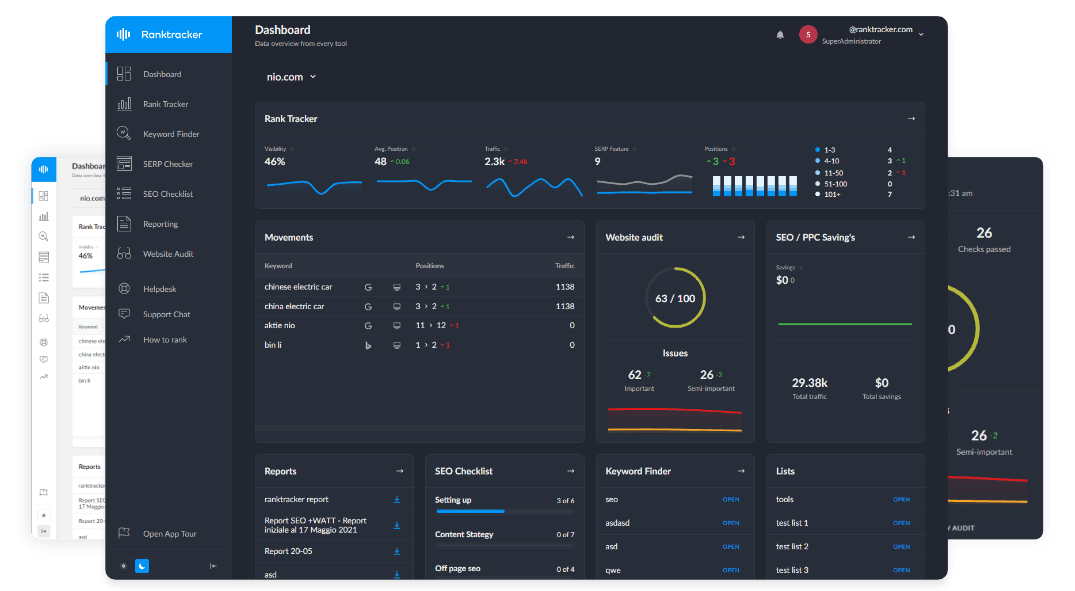Intro
Visuals are a great way to build trust. And netizens generally trust them more than words. However, sometimes, they are also misleading or fabricated, designed to deceive people.
For instance, a disaster picture could be from a different country. A product shot might belong to another seller. Even a smiling face on a profile might not belong to the person using it. Online, images carry power but also risk.
But don’t fret. You can quickly authenticate or check an image’s originality instantly. And for that purpose, you just need to search by image. Over time, it has become essential for spotting the truth, protecting ownership, and keeping trust alive in a space flooded with visuals.
How Reverse Image Search Works?
Most people assume reverse image search is about pixel matching. But it isn’t. Systems use computer vision and machine learning to break down the picture into a mathematical fingerprint. They map shapes, edges, textures, and colors into data points, then compare those points with billions of indexed files.
Key elements that power the process:
- Feature Extraction: Highlights patterns, objects, and outlines.
- Machine Learning Models: Spot similarities even if size or color changes.
- Metadata Reading: In some cases, searches also analyze EXIF data.
- Neural networks: Understand context beyond raw pixels.
That blend explains why search tools can find cropped, filtered, or even slightly altered versions of the same photo.
Why Reverse Image Search Is Becoming Essential?
1. Verification of News and Information
Misinformation spreads faster than headlines. A dramatic photo attached to a false story can mislead millions. Reverse image search helps stop that.
Journalists, fact-checkers, and researchers rely on it to:
- Check Origin: Was this image first published years ago in a different context?
- Spot Manipulations: Has the picture been cropped or spliced?
- Cross-Verify Events: Does the same image appear across credible outlets?
- Discredit False Claims: Show audiences the true source of viral visuals.
Without this step, newsrooms risk publishing recycled or misleading material.
2. Protecting Creative Ownership
Artists and photographers don’t just lose credit when their work gets stolen. They lose income as well. Therefore, blogs, brands, and marketers frequently lift visuals without permission.
Reverse image search makes it possible to find where those files resurface. Creators can then pursue credit, request removal, or issue licensing deals. It also arms them with evidence if disputes escalate into legal claims. In a market where visuals equal value, this tool functions as both shield and sword for creative professionals.
3. Brand Reputation and Monitoring
Companies invest heavily in imagery, from sleek logos to high-budget product shoots. When those visuals appear in fake ads or counterfeit listings, customer trust suffers. And this will harm the reputation of brands as well. However, a photo finder tool lets brands detect copyright infringement and counterfeit products and trace how their visuals are being used across the internet.
The All-in-One Platform for Effective SEO
Behind every successful business is a strong SEO campaign. But with countless optimization tools and techniques out there to choose from, it can be hard to know where to start. Well, fear no more, cause I've got just the thing to help. Presenting the Ranktracker all-in-one platform for effective SEO
We have finally opened registration to Ranktracker absolutely free!
Create a free accountOr Sign in using your credentials
Using the tool, they can:
- Identify counterfeit sellers.
- Catch unauthorized promotions.
- Prevent logo misuse in scams.
This isn’t about vanity. It’s about trust. Customers expect authenticity, and brands must defend it relentlessly.
4. Academic and Research Integrity
Students and researchers often rely on diagrams, charts, or illustrations to explain ideas. But misattributed visuals can damage credibility. Reverse image search helps educators and publishers confirm originality. It exposes plagiarism when visuals from published work appear uncredited in assignments or research papers.
Some institutions now also use it as part of their integrity checks. For scholars, it’s more than a plagiarism tool. It ensures the evidence they cite is tied to authentic, credible sources.
5. Enhancing E-commerce Trust
Shoppers rarely buy products without images. That trust is what scammers exploit by stealing official product shots for counterfeit sales. Reverse image search gives both buyers and sellers protection.
For customers:
- Confirm if the product photo exists on reputable retail platforms.
- Spot fake sellers using copied images.
- Check if one image links to multiple suspicious stores.
For retailers:
- Catch resellers misusing photos.
- Track counterfeit listings across marketplaces.
- Maintain visual consistency across official channels.
In short, it’s the difference between safe purchases and costly mistakes.
6. Strengthening Law Enforcement and Investigations
Police and cybersecurity teams increasingly rely on visual verification. Stolen pictures are a common tool in online scams and fake identities. Image search provides a starting point for investigations. It can reveal where a fraudulent profile photo first appeared or track down victims of identity theft.
Beyond scams, it helps with broader cases, too. Agencies use it to uncover child exploitation material, trace human trafficking ads, and identify suspects circulating online. The tool saves time and offers leads that traditional search cannot.
7. Personal Privacy Protection
Photos of individuals often spread far beyond their intended audience. Reverse image search provides a way to track and take control.
Practical uses for individuals include:
- Fake Accounts: See if your face is being used in impersonation profiles.
- Social Misuse: Discover if someone copied your family or vacation photos.
- Safety Checks: Parents can confirm whether children’s pictures show up outside trusted networks.
- Reputation Defense: Identify unapproved use of personal images in forums or websites.
In an era where privacy breaches carry real harm, this check isn’t optional anymore.
8. Competitive and Market Research
Companies want to know where their rivals’ visuals appear. Reverse photo search gives them that edge. Analysts track distribution, spot unauthorized resellers, and study visual trends. Even marketing agencies use it to measure how widely certain campaign images spread across platforms.
It’s competitive intelligence in plain sight. Unlike text-based research, which depends on keywords, visuals reveal how brands and industries actually show up in consumer spaces.
9. Enhancing Search Experience Beyond Text
Not everyone knows the right keyword to describe a product or object. Reverse photo lookup removes that barrier. By using the image itself, users can identify:
- Furniture or décor without knowing the brand.
- Clothing styles by matching visual similarities.
- Plants, animals, or landmarks without precise naming.
This makes the search process faster, more intuitive, and much closer to how people naturally process information.
10. Combating Fake Identities on Social Platforms
Scammers build convincing profiles with stolen photos. Social platforms are full of them. Reverse image search gives individuals and companies a way to expose fraud.
Its most valuable uses include:
- Recruitment Checks: Employers can verify if a candidate’s profile picture is genuine.
- Dating Safety: Users detect catfish accounts using stolen images.
- Business Security: Companies vet partners and collaborators before engaging.
- Community Trust: Social platforms integrate image checks to weed out fake users.
Because trust online depends on authenticity, this function has become a critical defense.
Why Has the Demand Exploded Recently?
Ten years back, reverse image search was more of a side feature than a daily tool. That changed fast. Visuals now dominate online spaces, and the problems tied to them have grown just as quickly.
What’s driving the shift:
- Social platforms built entirely around images turned the web visual-first.
- False stories powered by recycled photos forced newsrooms to verify.
- Counterfeit sellers used stolen product shots to fool shoppers.
- Regular people worried about their own photos being copied.
- Brands saw logos and campaigns pop up in scams.
- Investigators leaned on it to track fraud and fake accounts.
Conclusion:
Reverse image search is now part of the internet’s backbone. It ensures journalists publish the truth, creators protect their rights, shoppers avoid scams, and individuals defend privacy. For businesses, it keeps brands authentic and customers safe. For society, it helps keep misinformation and fraud in check. As images become the primary way people consume information, the ability to trace them isn’t just useful; it’s essential. Those who ignore it risk falling behind in credibility, trust, and security.

